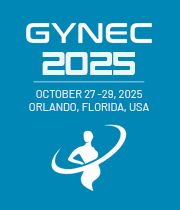Title : National assessment on the frequency of pain medication prescribed for intrauterine device insertion procedures within the veterans affairs health care system
Abstract:
The intrauterine device (IUD) is a highly effective form of long-acting reversible contraception, widely recognized for its convenience and efficacy. Despite its benefits, many patients report moderate to severe pain during and after their IUD insertion procedure. Furthermore, reports suggest significant variability in pain control medications, including no adequate pain medication, leading many women to be weary of utilizing this effective form of contraception. As a result, many patients have called for a comprehensive strategy to manage pain associated with IUD insertion within the United States (US), and the Center for Disease Control and Prevention updated its guidelines in 2024 asking providers to discuss effective pain management strategies with their patients prior to IUD placement The Veterans Health Administration (VHA) is the largest integrated healthcare system in the US, serving over 9 million enrolled Veterans annually. Women currently represent approximately 10% of enrolled Veterans, a figure that is expected to rise to 18% by 2040.The aim of our evaluation was to assess the pharmaceutical pain medication types, proportions, and trends related to IUD insertion procedures across the VHA, nationally, to help guide data driven quality improvement efforts within the VHA. IUD insertion procedures documented in the VA electronic health record were assessed from 1/1/2018 to 10/13/2023. Descriptive statistics described patient and facility characteristics while annual trends were assessed using linear regression. Out of the 28,717 procedures captured, only 11.4% had any form of prescribed pain medication identified. Non-Steroidal Anti-Inflammatory Drugs were the most frequently prescribed pain medication category (8.3%), with ibuprofen being the most common pain medication overall (6.1%). Over the assessment period, there was an average annual increase of 0.52% (p=0.038) of procedures with prescribed pain medication, increasing from 10.3% in 2018 to 13.3% in 2023. Although IUD insertion procedures have been seeing an increase in prescribed pain medication, the overall proportion remains disproportionality low relative to the pain experienced. Additionally, when pain interventions were initiated, they disproportionally utilized medication that have been shown to be ineffective. Given this initial baseline assessment, we will use this knowledge to guide clinician education and clinical interventions to increase the utilization of pain management strategies for patients undergoing IUD insertion procedures within the VHA.



